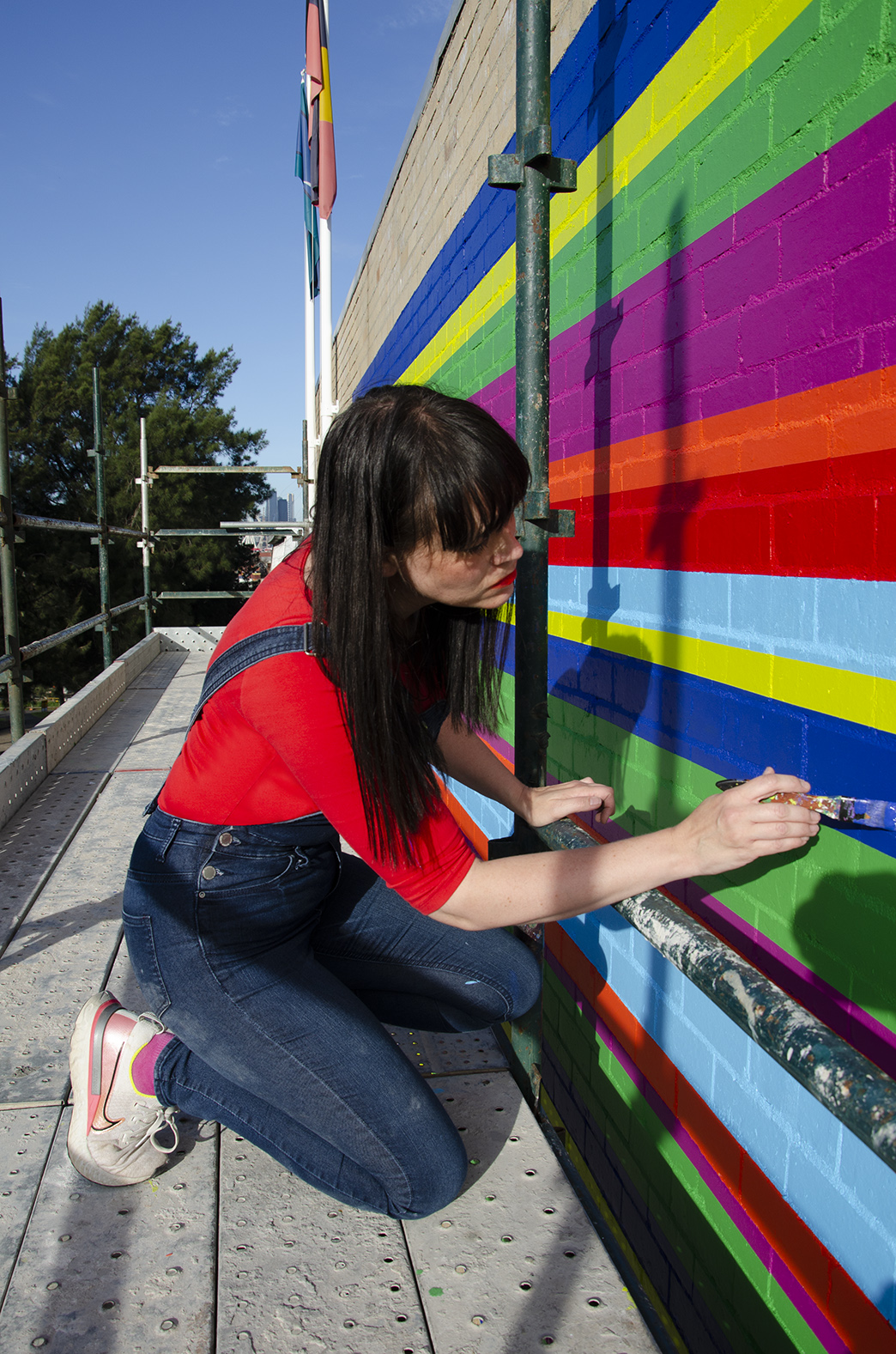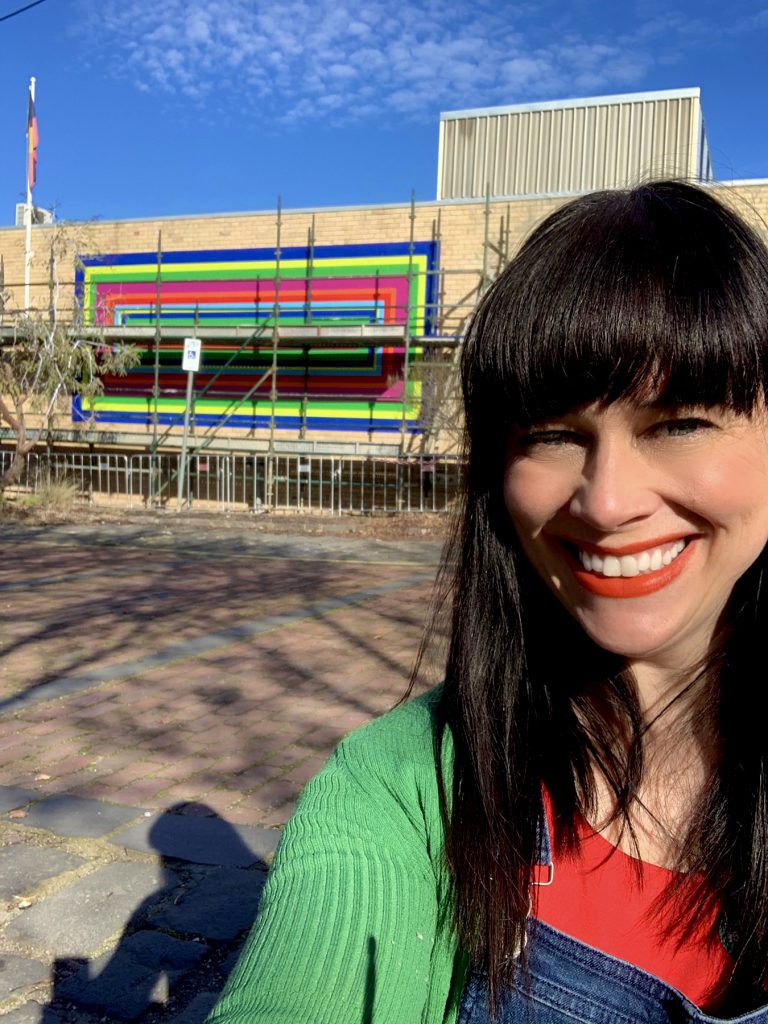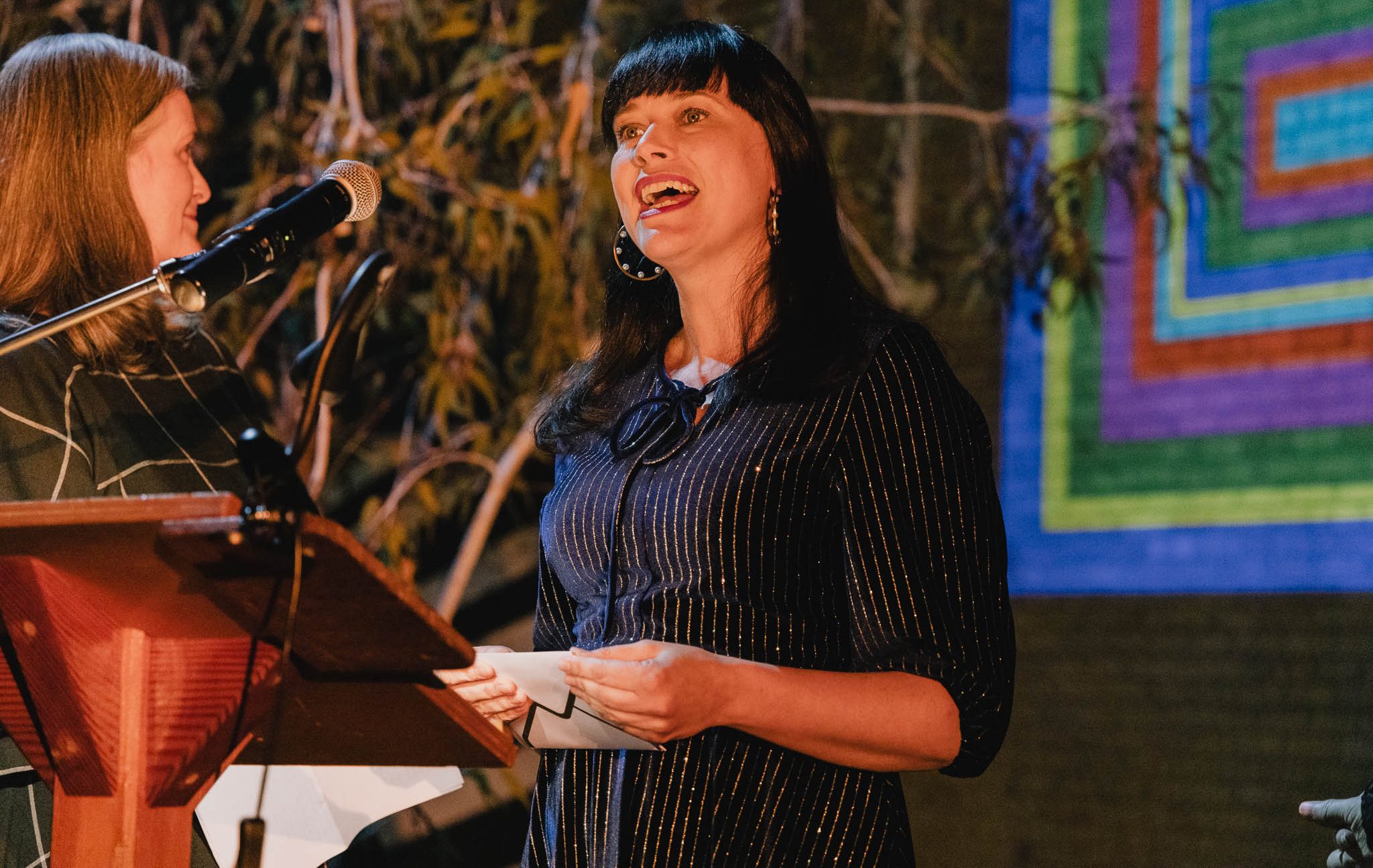Artist in Focus
Emma Coulter
Her work challenges perceived limitations between fine art and popular culture, using colour and spatial practice to blur boundaries of place, painting and the viewer’s experience.
Over the past 8 years, Emma has turned her focus to a numerical series of works named ‘spatial deconstructions’. At Footscray Art Prize 2021, she was named winner of the Street Art Prize category – leading to her newest installation ‘spatial deconstruction #25 (perceptual vortex),’ at Footscray Community Arts.
SEE MORE: Take the Footscray Art Prize virtual 360 exhibition tour
In this discussion we learn what’s fuelled Emma’s 17-year arts practice, what’s shaped her creativity and discover how ‘spatial deconstruction #25 (perceptual vortex)’ differs from her previous works.
Interview
Footscray Community Arts: Tell us about yourself as a painter
Emma Coulter: My training is a mixture of visual arts and built environment, which possibly explains the expansion of my painting practice into public space. Primarily underpinned by ideas about painting, my art practice spans site specific installation, sculpture and painting through the creation of highly chromatic spatial propositions.
I work with colour in a serial way, through repetition and hard-edge abstraction, transforming and manipulating various surfaces through the medium of paint, and placement of colour.

Footscray Community Arts: Explain the concept behind your winning design at Footscray Art Prize
Emma Coulter: My work is site-specific, so I see every situation as a unique opportunity to create a site-responsive work, within the bounds of my practice. The geographic and social context of the Facade of the Footscray Community Arts Centre, was something I felt compelled to respond to.
Conceptually, I wanted to create a metaphorical ‘window’ into the space between the wider community and the arts centre, so I proposed a work, ‘spatial deconstruction #25 (perceptual vortex)’, to create a theoretical link between the two spaces, through the structured arrangement of colour on the facade. Perceptually the work forms a geometric vortex or window from the outside to the inside, whilst simultaneously also opening out from within.
Footscray Community Arts: What does the term ‘street art’ mean to you?
Emma Coulter: I think both street art and mural art have a long history of being both activist, underground and ‘outsider’ to some extent. My work I see as bringing fine art into the everyday context. What I am really interested in doing is taking fine art out of the institutional environment, and making the work accessible to new audiences.
Through my site-specific work or ‘spatial deconstructions’, my aim is to challenge the hierarchy of the art institution and fine art, by blurring boundaries between place, painting and the viewer’s experience.
Footscray Community Arts: As an award-winning artist, what have been the key contributors to your success?
Emma Coulter: This is a great question, and I think success can mean many different things to different people. I feel lucky to have had some great opportunities, and have been very fortunate to win several prizes and grants along the way, (although I am also very aware that I am still only a small way along this journey as an artist!). Grants, prizes and commissions and/or sales definitely helps an artist gain recognition, but also importantly they help an artist financially sustain their practice, and invest in the best resource available – time. Time to make work and invest in yourself.

What success looks like on the outside, can feel very different on the inside. Life experience and confidence, can play a huge role in maintaining your presence as an artist. I have always been prepared to look for opportunities, where my work might fit, outside of the usual scope – if I had to pick one thing, that would be defining, that would be it.
I also consider having diversity in my background, in my education, and my training as a strength. The influences of different people, different opinions, living in different places, these things have all given me the strength and resilience to look outside the restrictions of external influences, and really to always question things. I also think that timing for an artist is a really critical thing. For me, undertaking my masters at VCA at the right time, really created opportunities that I couldn’t have otherwise imagined.
It goes without saying that being professional is also really important, treat your art practice like a small business, as a job. Manage your time, maintain a social media presence, develop relationships, don’t be afraid to seek assistance or outsource where required.
Of course, above everything else – you have to make the work. The work has to be the most important thing.
Footscray Community Arts: Any advice for emerging artists looking to gain exposure or recognition?
Emma Coulter: I believe that successful art is a marriage of the conceptual, technical and aesthetic. Knowing your practice, knowing what it is and what it is not, knowing what you are trying to convey through your work, and what opportunities will fit for you, I think that’s an important starting point. I think there’s definitely a temptation now to overshare. Social media is useful, but also extremely time consuming, try to be strategic about using it. Time is your most precious resource. Make work that is true to yourself and your practice and be vigilant and disciplined about it.
Document your work well. Keep your bio, CV, and website up to date. Develop good working relationships with your peers in the arts, fellow artists, curators, writers, gallerists, and arts media. Allocate time to admin. Apply for everything that you think your work fits into. Don’t waste your time applying for things that don’t fit your practice.
Know that there are many things that influence successful outcomes in the arts, and that sometimes even when your work is really ‘good’, it may not be selected for that opportunity that you really, really wanted, but that another one will come along, if you keep making the work that is true to your practice.
SEE MORE: Take the Footscray Art Prize virtual 360 exhibition tour
Footscray Community Arts: Well said! Is there anything you’d like to add?
Emma Coulter: Thank you. It’s honestly such an honour and a privilege to have this new work on the Footscray Community Arts Centre facade. I am so excited about sharing the work with everyone.

Image courtesy of Emma Coulter.
You can see Emma’s winning work, spatial deconstruction #25 (perceptual vortex), on the North-facing Warehouse wall at Footscray Community Arts Centre. Keep up to date with Emma’s artistic practice on Instagram and Facebook, or visit her website for more.
The biennial Footscray Art Prize is a collaboration between Victoria University, Maribyrnong City Council, Footscray Community Arts Centre and the Rotary Club of Footscray. It will next open for entries in the second half of 2022.

